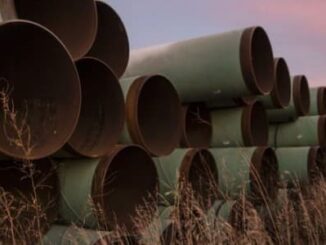
The brutal Hamas attacks on Israel and the continuing military response to them have given rise to many questions related to regional and global energy security in recent days.
As is always the case whenever new conflicts arise in the Middle East, the direction of oil prices was the first question on many analysts’ minds. The market’s response thus far has been fairly muted, with crude prices rising by about 5 per cent at the start of Friday trading. That trend appears likely to continue absent some significant escalation of the conflict outside of Israel and Gaza, or a decision by officials in the Biden administration to restart enforcement of US sanctions on Iran’s oil exports, which they quietly stopped performing late in 2022.
With Israeli Prime Minister Benjamin Netanyahu promising a ground campaign to eradicate Hamas and President Joe Biden pledging full US support, other questions around regional and global energy security are also being raised. Prominent among them is the status of the government in Qatar, and the country’s exports of liquefied natural gas (LNG) that serve as a vital source of sorely needed natural gas supplies across Asia, Europe and the UK.
The questions surrounding Qatar arise chiefly from its strong ties to both Hamas and Iran, which serves as Hamas’s major funder and sponsor. Hamas maintains its head office in Qatar’s capital city of Doha and receives a good deal of its funding from the Qatari government. According to the Foundation for the Defense of Democracies, Qatar has provided between $360 million-$480 million annually to Hamas in recent years, enabling the funding of social services and strengthening the terrorist group’s grip on power in Gaza.
Qatar’s strong ties to both Hamas and Iran give rise to concerns it could become entangled in the response by Israel and the US to the terrorist attacks. Qatar’s ties to Iran were a factor in an agreement between the US and Iran to pick Doha banks as repositories for the $6 billion in funds released to Iran’s government by the Biden administration as part of a hostage exchange between the two countries in September.
Following Hamas’s attacks on Israel, that $6 billion became a flashpoint of criticism for the Biden government, with allegations Iran had used the money to fund Hamas’s operations. The New York Times reported on Thursday that, following days of negotiations, Qatar’s government has agreed to refreeze those funds and deny Iran’s government access to them.
When asked about such an agreement with Qatar, US Secretary of State Anthony Blinken did not overtly confirm it, but did claim, “none of the funds that have now gone to Qatar have actually been spent or accessed in any way by Iran.” White House spokesman John Kirby was similarly noncommittal when asked the same question, but did go on record saying, “Every single dime of that money is still sitting in a Qatari bank. Not one dime of it has been spent.”
Regardless of the actual status of those funds, the reports of Qatari cooperation with the US related to their disposal should somewhat ease concerns about ongoing availability of the country’s LNG exports.
There is little question about the vital role Qatar plays in supplying the global LNG market. Prior to 2022, the UK had regularly sourced the majority of its LNG imports from Qatar. But the vast increase in US LNG exports in response to Russia’s war on Ukraine enabled it to surpass Qatar as the UK’s biggest LNG trading partner, supplying more than half of all UK imports. Records maintained by the UK government show Qatar still supplying more than a 30 per cent share of British LNG needs, and a similar share of overall European imports. Natural gas is vital for power generation, heating, industry and other uses.
Asia is the other main destination for Qatari LNG, receiving 70 per cent of Qatar’s exports during 2021. Major Asian importers include China, South Korea, India, Japan and Pakistan. Any disruptions of Qatar’s LNG exports would result in major economic impacts across both the European and Asian continents.
Qatar’s geographic positioning near the mid-point of the Persian Gulf serves as a key factor here. This reality yet again highlights the critical nature of the ability to maintain the open flow of shipping traffic through the Strait of Hormuz, the narrow choke point connecting the Persian Gulf to the world’s oceans and global markets for both crude oil and LNG. This objective has been a key role filled by the US Navy since the end of World War II. Iran, which sits on one side of the Strait, has often sought to impede shipping there, and has recently taken to seizing vessels on various pretexts. The US has moved forces to the area in response.
Any major escalation of this conflict between Israel and Hamas that threatens to disrupt that flow comes with wide-ranging global economic and energy security implications.



